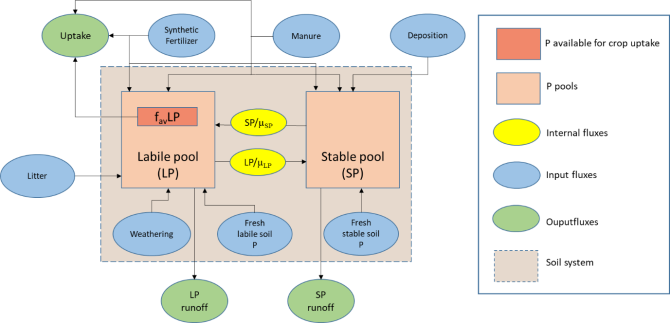
Project
Sustainable phosphorus inputs at the global and regional scale in view of crop yield and water quality
An historical excess of phosphorus (P) fertilization in industrialized countries has led to P-saturated soils and correspondingly to euthropication of waterbodies due to enhanced P losses from soil to water through subsurface flow and runoff. In a collaboration between Wageningen University & Research, the Nutriënt Management Institute, AgroCares and the Dutch Environmental Assessment Agency this research focuses on approaches to define and derive sustainable phosphorus inputs, balancing crop yield and environmental P losses, both for the Netherlands and the world.
Aim of the project
The overall objective is to assess sustainable phosphorus inputs at national and global scale in view of crop requirements, considering both target crop yield and water quality.
Our first aim is to evaluate whether the P saturation index, being the ratio of oxalate extractable P versus aluminium and iron, can be used as a universal agronomic and environmental soil P test. Current soil P tests used in routine agronomic soil testing focus solely on relations with crop yield, while impacts of agricultural management on water quality and how to best make use of historically build-up soil P becomes an increasingly important challenge.. Using data from the soil database of the Nutriënt Management Institute, we illustrate multiple advantage of the P saturation index as an alternative soil P test, and (opiniately) argue why this soil P test fits best with current societal challenges by better allowing to assess medium- term and long-term sustainable P inputs.
Our second aim is to improve the spatial heterogeneity of P sorption in regional (INITIATOR) and global (IMAGE-(G)DPPS) P models. With a few exceptions on the regional scale, the P binding capacity of soils is not included in current models, while this soil property has a large effect on the fate of surplus P (P input minus P uptake) across different pools (directly available, reversibly bound and strongly bound P) and correspondingly on crop yield and P losses to the water system. We aim to create high resolution maps of the phosphorus binding capacity of soils using machine learning techniques and incorporate those maps in current P models.
Our third aim is to use the improved models to derive spatially explicit P input targets at the national (Netherlands) and global scales in order to bring soils to agronomic and/or environmental optimal levels. We aim to provide insight in: i) the amount of P that is required to change the soil P status to an optimum; ii) the potential exceedance of environmental thresholds when soil P status is changed to an optimal level for crop yield; iii) the impacts on crop yield when soil P status is brought to P levels corresponding to environmental thresholds.

Expected results
- Proposing and alternative soil P test which fits with the current challenges to decrease impacts on water quality and to best make use of historically build-up soil P
- High-resolution maps of the maximum phosphorus binding capacity of soils (Dutch and global scale)
- Improvement of the spatially heterogeneity of P sorption in current soil P models (INITIATOR and IMAGE-(G)DPPS
- Derivation of target P inputs at the Dutch and global scale to bring soils to target P levels for crop yield and/or quality and a discussion and discuss how to define sustainable P targets.